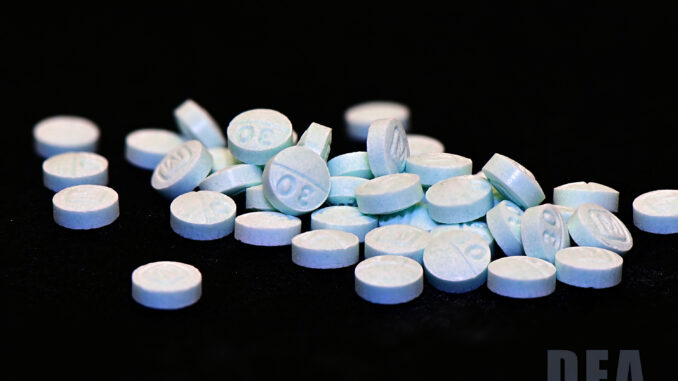
FENTANYL STRIKES HOME
By Dr. Michael Oberschneider
According to U.S. government data, fentanyl is the leading cause of death for adults between ages 18 and 45. It is also a surging problem for adolescents nationwide, and Loudoun County is not immune.
In just the past few months, nine students from Park View High School in Sterling overdosed on suspected fentanyl use – with eight of the overdoses occurring within a few weeks.
Since then, two additional non-fatal fentanyl overdoses have occurred in Loudoun Public Schools – the first reportedly at Freedom High School in South Riding and another at an undisclosed school.
In today’s evolving parenting landscape, one of the paramount concerns is the well-being of our children in the face of substance use and abuse. With the legalization of cannabis for recreational use for adults (currently 24 states have legalized recreational cannabis, with Virginia being one of them) and the constant dissemination of information via social media, fentanyl availability is on the rise.
Fentanyl is being sold via e-commerce platforms and social media. So, essentially any pre-teen or teen with a smartphone can find fentanyl if they try hard enough.
So, what exactly is fentanyl? Fentanyl is a synthetic opioid, akin to morphine but 50 to 100 times more potent. It’s medically prescribed for the management of severe pain, particularly post-surgical pain or advanced cancer pain. However, its illicit use has surged in recent years, causing a notable public health crisis. According to the Centers for Disease Control and Prevention, fentanyl caused 84% of all teen overdose deaths in 2021 and those numbers are only growing. The death rate for teens nearly tripled from 2019 to 2021.
If fentanyl is so dangerous, why are youth seeking it out? They’re not. While the allure of experimentation, peer pressure or even self-medication for physical or emotional pain can draw teens into the vortex of opioid misuse, most teens ingest the drug unknowingly.
The illicit drug market further compounds the issue. Fentanyl is often mixed with other drugs unbeknownst to the user, escalating the risk of overdose. Some counterfeit fentanyl pills are made to look like other drugs such as Xanax, Percocet, Oxycontin and Adderall. Even cannabis can be laced with deadly doses of fentanyl. When misused, even a small amount of fentanyl can be deadly, making it a silent predator lurking in the shadows.

So, what can we do as parents? Be aware and be present. In Northern Virginia, many of us work long hours, and as parents we often juggle a lot. We cannot, however, fail to be too busy to get things right for our children and teens on this topic.
A good place to start is with a conversation. Initiating a dialogue with your child or teen about fentanyl and its dangers is a crucial step towards prevention.
When talking with your younger child about drugs, be mindful of what your child is capable of handling before discussing things. Your child’s age, maturity and threshold for worry and anxiety are things to consider before discussing illicit drug use. Just as you would not discuss natural disasters, terrorism or school shootings in the same way with 4-, 8- or 18-year-old children due to developmental differences, you should not do the same with the topic of drugs.
For your teens, be more direct and detailed on the topic of drug use and fentanyl. It’s essential to create a safe and non-judgmental space where your teen feels comfortable discussing their experiences and concerns. Providing factual information and expressing your support will foster a conducive environment for a meaningful talk.
Being informed as parents is also essential. Parents should acquaint themselves with the signs of opioid misuse and the resources available for help (e.g., the National Center on Substance Abuse and Child Welfare).
Establishing a network of support, including mental healthcare professionals, community groups and educational resources, can provide a solid foundation for keeping your teen safe. If, as a parent, you suspect a fentanyl overdose (or a drug overdose of any kind) for your child or teen, immediately call 911 and go to the nearest hospital ER.
Moreover, our school system, in my opinion, also plays an important role in educating our children and teens about illicit drug use and in working with parents. I was pleased to see that Gov. Glenn Youngkin introduced a bipartisan bill in the Virginia legislature requiring all school districts to notify parents of school-connected overdoses within 24 hours. Increased transparency and improved communication between parents and schools is vital when it comes to helping our children and teens with serious problems such as drug use.
The menace of fentanyl is a pressing issue that necessitates proactive involvement from parents and schools. Understanding the risks, initiating open conversations with your child or teen and arming oneself with the requisite knowledge and resources are pivotal steps in safeguarding our youth from the clutches of this perilous substance.
Through education and support, we can strive to create a safer environment for our children and teens, nurturing them toward a healthy and promising drug-free future.
Dr. Michael Oberschneider, PsyD, NCCE, NCPC, is the founder and director of Ashburn Psychological and Psychiatric Services. You can learn more at ashburnpsych.com.

